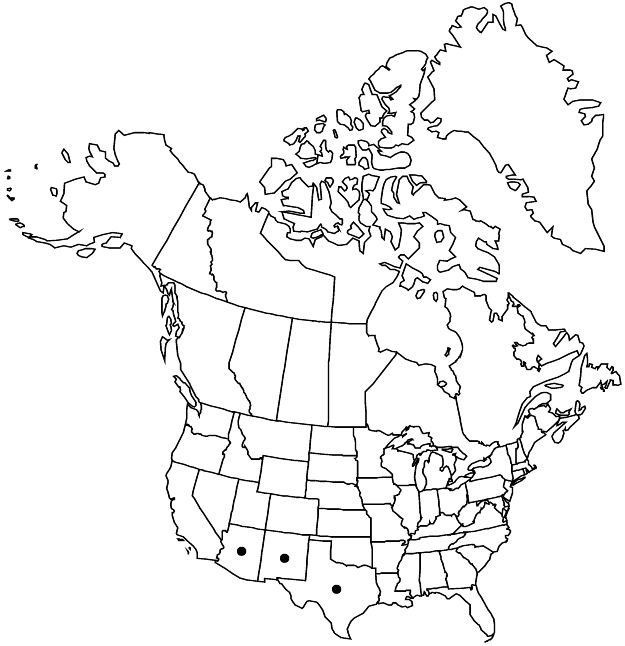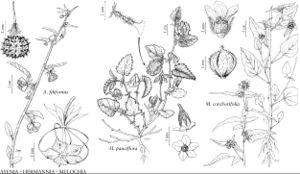Ayenia filiformis
Proc. Amer. Acad. Arts 24: 42. 1889.
Subshrubs, decumbent or erect, 0.2–0.5 (–0.9) m. Stems hairy, hairs simple and retrorse or simple and stellate. Leaves: petiole 0.4–1 (–1.5) cm; blades of proximal leaves ovate to orbiculate, 0.5–2 (–3.2) × 0.2–1 (–1.5) cm, distal oblong-ovate to ovatelanceolate or linear, unlobed, 1–4.3 (–7) × 0.2–1 (–1.5) cm, base rounded to truncate, margins serrate to doubly serrate or dentate, sometimes ciliate, apex subacute, 3 (–5) -veined from base, surfaces usually stellate-puberulent, sometimes glabrescent. Cymes axillary, not borne on short-shoots (brachyblasts), 1–3 (–11) -flowered; peduncle 2–4 (–7) mm. Pedicels 2–4 (–7) mm. Flowers: sepals persistent, not reflexed at anthesis, ovatelanceolate, 1–3 mm, stellate-hairy abaxially; petal claws 2–2.5 (–6) mm, lamina subtriangular or rhombic, 1–2.5 × 1–2 mm, base ± attenuate on claw, margins entire, apex notched, surfaces hairy abaxially, hairs simple, multicellular, abaxial appendage filiform to slightly clavate, 0.7 mm; androgynophore 2–3 mm; stamen filaments present; stigmas slightly exserted. Capsules oblate, 2–4 × 5 mm, densely stellate-hairy, prickles 0.5–1 mm. Seeds 2–3 mm, tuberculate.
Phenology: Flowering and fruiting spring–early fall.
Habitat: On limestone and granite soil, steep rocky slopes, canyons, sandy washes
Elevation: 1000–1500 m
Distribution

Ariz., N.Mex., Tex., Mexico (Chihuahua), Mexico (Sinaloa), Mexico (Sonora), Mexico (Zacatecas)
Discussion
In Texas, Ayenia filiformis is known from the trans-Pecos region.
Selected References
None.
